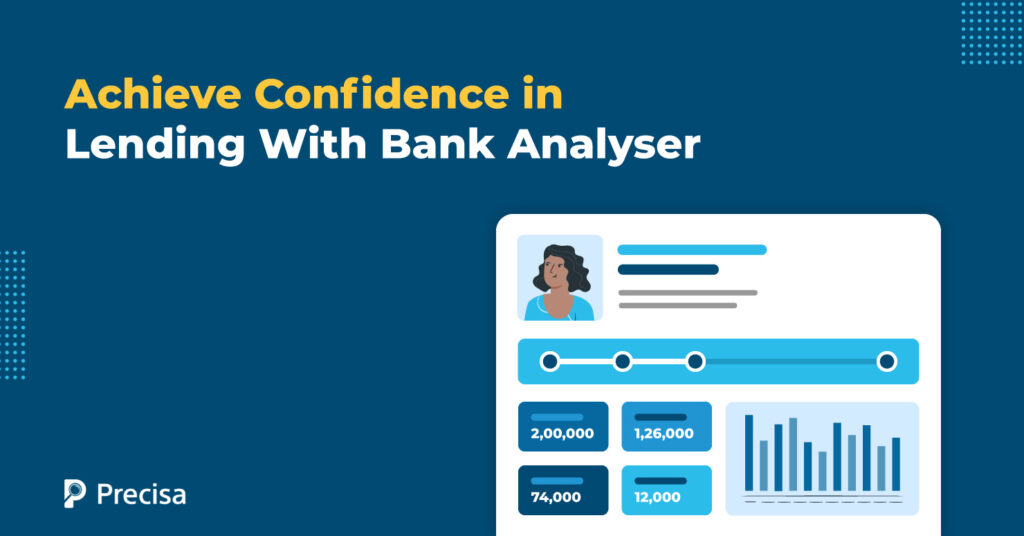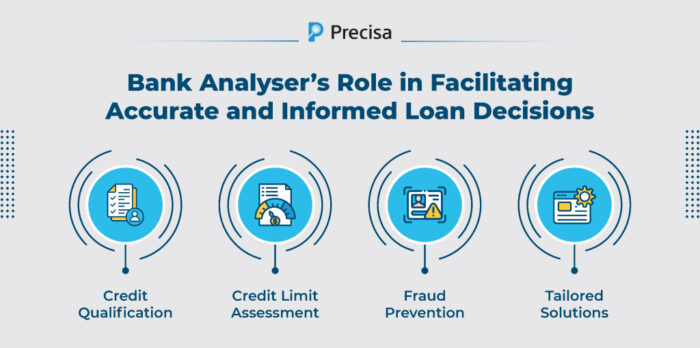Achieving Confidence in Lending: How Bank Analyser Enables Accurate Loan Decisions

Advances in data analytics, big data, and artificial intelligence (AI) have opened up new avenues for banks and other financial institutions to improve their credit decision-making models. Additionally, the increasing appetite for digital transformation and sophisticated tech-driven services has translated into introducing innovative tools like bank analyser in the banking ecosystem.
The Indian financial ecosystem is evolving rapidly, marching toward a more robust and digitised future. The entry of financial technology startups (Fintech) and non-banking financial companies (NBFCs) is also a major reason for this impressive transformation and swelling competition in the financial sector.
Despite these giant strides toward financial inclusion and digitisation, India is grappling with a notable problem – the rising number of unsecured loans and non-performing assets.
This article explores how financial analysis tools like a bank analyser have emerged as invaluable assets to curb this problem and assist lenders in making informed loan and credit decisions.
What is a Bank Analyser?
A bank analyser is a financial analysis tool that enables lenders to determine borrowers’ creditworthiness, manage a loan’s lifecycle, and optimise risk and return management.
It is part of the new-age advanced credit model that overcomes the traditional hurdles faced by outdated credit models that primarily rely on inconclusive or debatable assessments made by underwriters and relationship managers.
Bank Analyser’s Role in Facilitating Accurate and Informed Loan Decisions
Banks that have embraced technology and reliable tools to improve their credit decisions have enjoyed a few tangible benefits. This section explores how a bank analyser can help financial institutions mitigate risks and minimise their credit-loss rates.
Here’s how a analyser tool can become a potential game-changer in enabling accurate credit decisions.
1. Credit Qualification
Lenders, including banks and NBFCs, are burdened with thousands of loan applications every month, adding immense pressure on them to accelerate their loan approval processes. However, before proceeding, they need to ensure whether a loan applicant is eligible for the type of loan they have applied for.
Traditionally, small and medium-sized enterprises (SMEs) without a formal credit history struggled to secure loans, particularly from the organised lending sector. Lenders can now access the borrower’s structured and unstructured data across different data points, including browsing history, spending habits, social media, and more. A bank analyser leverages this data to accelerate the credit qualification process and improve credit risk assessment.
2. Credit Limit Assessment
Once the lender determines the borrower’s eligibility, they need to calculate the maximum amount of money they can lend to them. A bank analyser can calculate a loan applicant’s credit limit by leveraging data from structured data sources, including bank statements, tax returns, pending and paid invoices, past credit records, and the ability to repay the loan.
While this would be a lengthy process if performed manually, a robust and advanced bank analyser automates it, saving lenders precious time, and operating costs, and improving overall efficiency.
3. Fraud Prevention
As more and more lenders seek innovative ways to increase their market share and acquire new customers, the focus on digitising financial processes has increased significantly.
While this endeavour comes with its fair share of advantages, it creates a window of opportunity for fraudulent and unethical activities. Some of the most common types of fraud include identity theft, third-party fraud, tax-related fraud, and payment fraud.
Indian banks recorded a whopping 9000 loan and banking fraud-related complaints in the last year, with over INR 60,000 crore at stake. A bank analyser is a useful tool to mitigate these risks as it provides a clear picture of a loan applicant’s past behaviour and financial records.
4. Tailored Solutions
A bank analyser can be customised as per your requirements and also be integrated into your existing tech stack. The advantage here is that these advanced financial analysis tools do not interfere with the legacy in place, providing a seamless user experience.
Additionally, lenders can also use a bank analyser to identify the borrower’s payment behaviour to provide personalised financial and loan repayment solutions.
Final Note
As the financial ecosystems evolve with new technological advancements, it’s clear that dated and inefficient, traditional credit models will take the backseat and will soon be replaced by robust and tech-driven financial tools.
A bank analyser is one of those tools that has shown promising signs of not only expediting credit decisions but also leveraging data for accurate decision-making.
With over 6.5 lakh bank statement analyses and 55 million transactions under its belt, Precisa’s bank statement analyser is a SaaS – financial analysis tool that evaluates financial documents, runs fraud risk checks, and provides detailed insights into a borrower’s credit history, potential of fraud, and other anomalies.
Get in touch with us today to know more.




